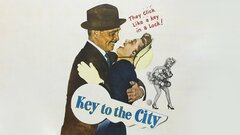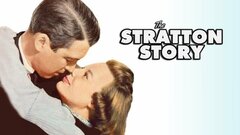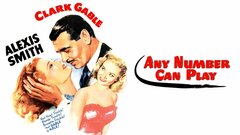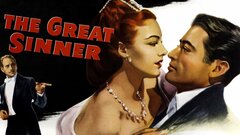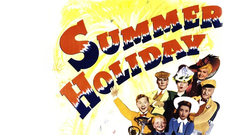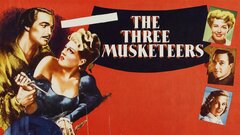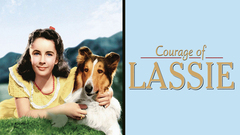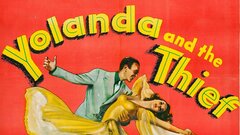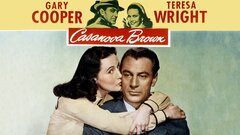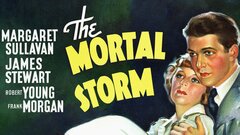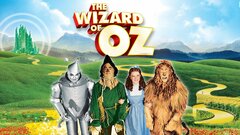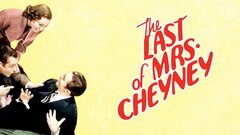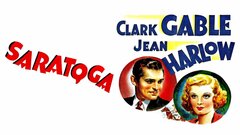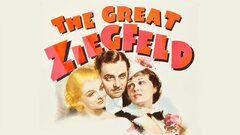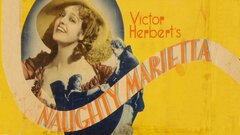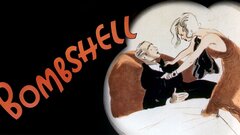"Pay no attention to that man behind the curtain," exclaimed beloved character actor Frank Morgan during a key moment in "The Wizard of Oz" (1939) and his beautifully conveyed expression of embarrassment and desperation perfectly exemplified the capacity he displayed in so much of his work. He first established himself on stage, making regular appearances on Broadway in such major productions as "Gentlemen Prefer Blondes" (1926-27) and "The Band Wagon" (1931-32).
Morgan was already featured in movies by that point, but really hit his stride in the 1930s, earning an Academy Award nomination for "The Affairs of Cellini" (1934) and distinguishing himself in notable pictures like "The Good Fairy" (1935) and "The Great Ziegfeld" (1936). His most famous screen credit, however, was the musical/fantasy classic "The Wizard of Oz" (1939), where he was wonderfully memorable in no less than five roles.
He displayed excellent dramatic form in "The Shop Around the Corner" (1940) and "The Mortal Storm" (1940), and a second Oscar nomination followed for "Tortilla Flat" (1942).
MGM was so pleased with the consistency of Morgan's vibrant and delightful performances that he was with the company from the early 1930s right up until his premature death in 1949.
Specializing in characters that were usually a bit befuddled and flustered, but motivated by honorable intentions, Morgan endeared himself to audiences everywhere and remained one of Hollywood's most beloved supporting players long after his passing.
A native of New York City, Frank Morgan was born Francis Philip Wuppermann on June 1, 1890. The youngest of 11 children in an affluent family that handled distribution of Angostura bitters in America and other countries, Morgan was a talented singer as a boy, but it would be a number of years before he became a professional performer.
Following his initial schooling, Morgan attended Cornell University for a time, but spent the next few years bouncing between white- and blue-collar jobs in various parts of the country. In the meantime, Ralph Morgan had established himself as a desired stage actor and he persuaded his younger brother to give the profession a go.
By late 1914, Morgan was working on the Great White Way and made many return trips in the years that followed. Most of his early credits were in shows that failed to connect, but a number were major hits and among the best remembered of the era.
Concurrently, Morgan was also starting a career in movies with leads in such films as "A Modern Cinderella" (1917) and supporting assignments in fare like the John Barrymore vehicle "Raffles, the Amateur Cracksman" (1917).
However, Broadway was his main focus and Morgan further established his stage reputation in such successful productions as the musical farce "Rock-a-Bye-Baby" (1918), "My Lady Friends" (1919-20) and "Her Family Tree" (1920-21).
He showed his diversity by playing an Italian count in the drama "The Lullaby" (1923-24) which led to his being cast in such major affairs as Anita Loos & John Emerson's smash "Gentlemen Prefer Blondes" (1926-27) and George S. Kaufman & Howard Dietz's "The Band Wagon" (1931-32).
Morgan had another winner with the comedy smash "Topaze," which followed its 1930 run on Broadway with a lengthy tour across the country.
Although Morgan probably could have continued on the stage for many years to come, he soon switched his focus to motion pictures and had supporting outings in a series of fairly minor movies for Paramount and RKO.
His viability rose considerably when he joined the contract player stable at leading studio MGM. Beginning with "Reunion in Vienna" (1933), Morgan graced several of the company's most memorable efforts from that period, including Jean Harlow's "Bombshell" (1933), and he earned an Academy Award nomination for "The Affairs of Cellini" (1934), the cinematic version of "The Firebrand of Florence."
He also began to receive occasional leads in such productions as "There's Always Tomorrow" (1934), but Morgan's popularity and acclaim would come from his recurring turns as one of the most best character actors in the business.
Stealing scenes became a regular part of Morgan's routine, but he did it in a way that was invariably agreeable and probably also amused the big name players on set. His comedic skills had a workout in William Wyler's "The Good Fairy" (1935), which cast Morgan as a wealthy businessman who has his eye on Margaret Sullivan, and he made a humorous friend/rival for William Powell as "The Great Ziegfeld" (1936).
20th Century Fox also borrowed Morgan to play the double-dealing grandfather of child superstar Shirley Temple in the charming musical "Dimples" (1936). Meanwhile, assignments like "The Crowd Roars" (1938), which cast Morgan as the no-good father of rising boxer Robert Taylor, reminded ticket buyers that he could also dominate the screen in darker roles.
The final year of the decade featured Morgan in the project for which he would be best remembered.
Something of a disappointment in its original release, "The Wizard of Oz" (1939) went on to become one of the most adored movies of all time, and while main players Judy Garland, Ray Bolger, Bert Lahr and Jack Haley had much to do with its success, Morgan also deserved a significant measure of credit.
He played five parts in the picture, including Professor Marvel, the stern Gatekeeper who is reduced to torrents of tears, and the fraudulent wizard of The Emerald City, whose reveal as a cowardly little man was beautifully conveyed by Morgan with equal measures of humor and pathos.
While it was well-nigh impossible to imagine the film without him, Morgan was only given the job after it had been turned down by both W.C. Fields and Ed Wynn.
In additional to regularly winning over the sympathies of audience members, Morgan ranked as one of the most esteemed performers in Hollywood, with many co-stars praising his amiability and professionalism.
He was also a popular member of the "Irish Mafia," whose hard-drinking ranks included Spencer Tracy, Pat O'Brien, James Cagney and Louis Calhern.
By all accounts, Morgan was a highly-functional alcoholic who dipped into his private stash whenever convenient, but still managed to avoid falling into the sort of scandalous situations that plagued several of his elbow-bending colleagues.
While he may not have commanded the top money, Morgan's services were valued by MGM and that, plus the Wuppermann family's considerable assets, ensured that he was able to lead an affluent lifestyle that included a large cattle ranch and yachts.
The 1940s proved to be equally busy for Morgan, who again impressed in more serious parts, including Ernst Lubitsch's charming confection "The Shop Around the Corner" (1940) and "The Mortal Storm" (1940), one of the first Hollywood movies to unflinchingly criticize the rise of Nazism.
There were also no shortage of more typical Morgan characterizations, like his semi-slippery oilman in "Boom Town" (1940) and the alcoholic, but principled judge in "Honky Tonk" (1941), but he garnered a second Oscar nomination for his touching performance as a poor wood salesman with unbreakable religious faith in the John Steinbeck adaptation "Tortilla Flat" (1942).
In addition to his busy MGM production schedule, Morgan also had an ongoing career in radio, where he was often utilized as a guest replacement for regular hosts.
However, "The Frank Morgan Show" (NBC, 1944-45) and summer replacement series "The Fabulous Dr. Thaddeus Q. Tweedy" (NBC, 1946-47) also provided regular vehicles for Morgan's comedic vocal talents.
Unfortunately, as he approached age 60, Morgan's copious consumption of alcohol and cigars finally caught up with him.
He was assigned to play Buffalo Bill Cody in "Annie Get Your Gun" (1950), but only appeared before the cameras for the shooting of a single scene.
Sometime during the evening of Sept. 18, 1949, Morgan experienced a fatal heart attack while he was sleeping.
His role was subsequently portrayed by old friend Louis Calhern, and Morgan's final complete film, "Key to the City" (1950), opened close to a year after his passing.
He was posthumously honored with stars on the Hollywood Walk of Fame for his motion picture and radio work.
While "The Wizard of Oz" ensured him a lasting place in cinema history, Morgan also left behind a remarkable filmography that revealed his mastery of virtually all aspects of acting.
By John Charles
